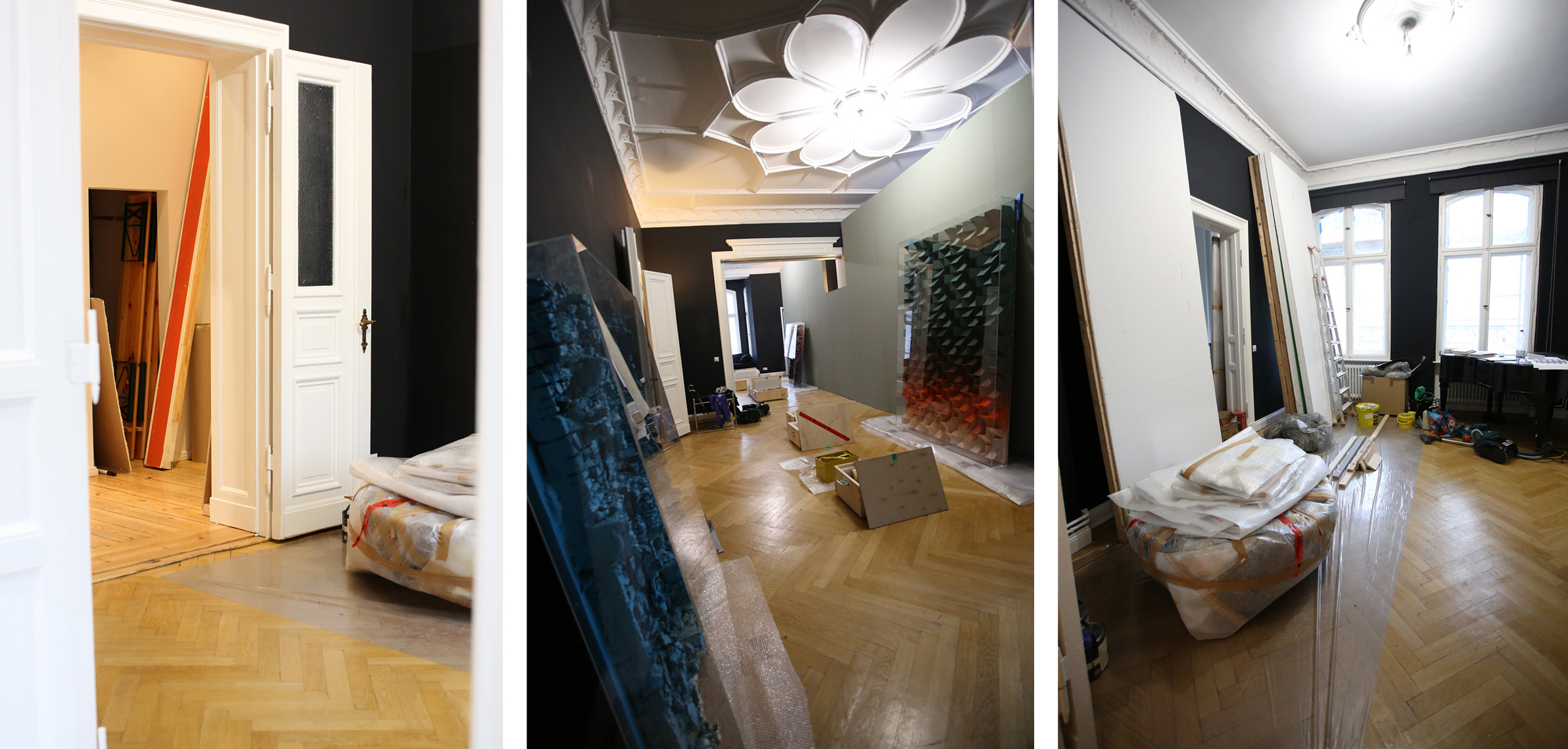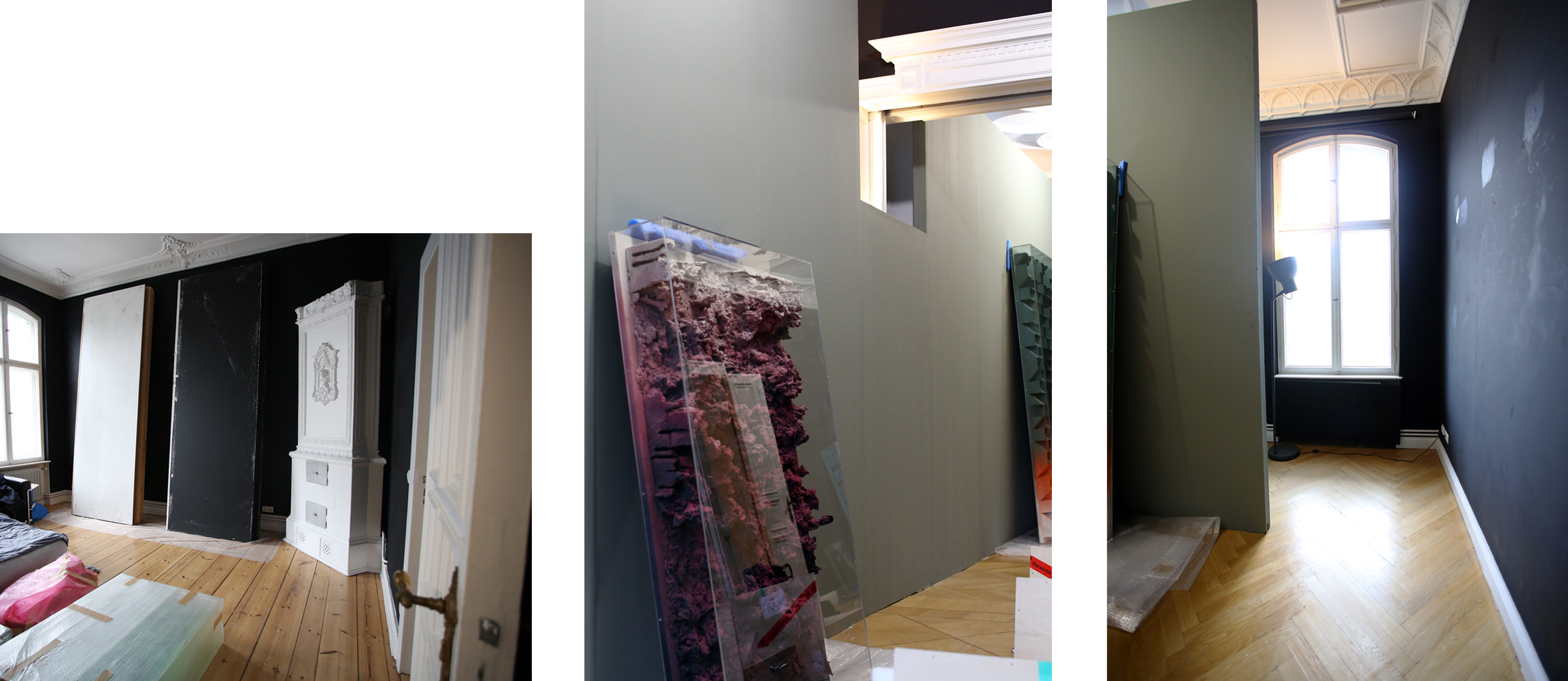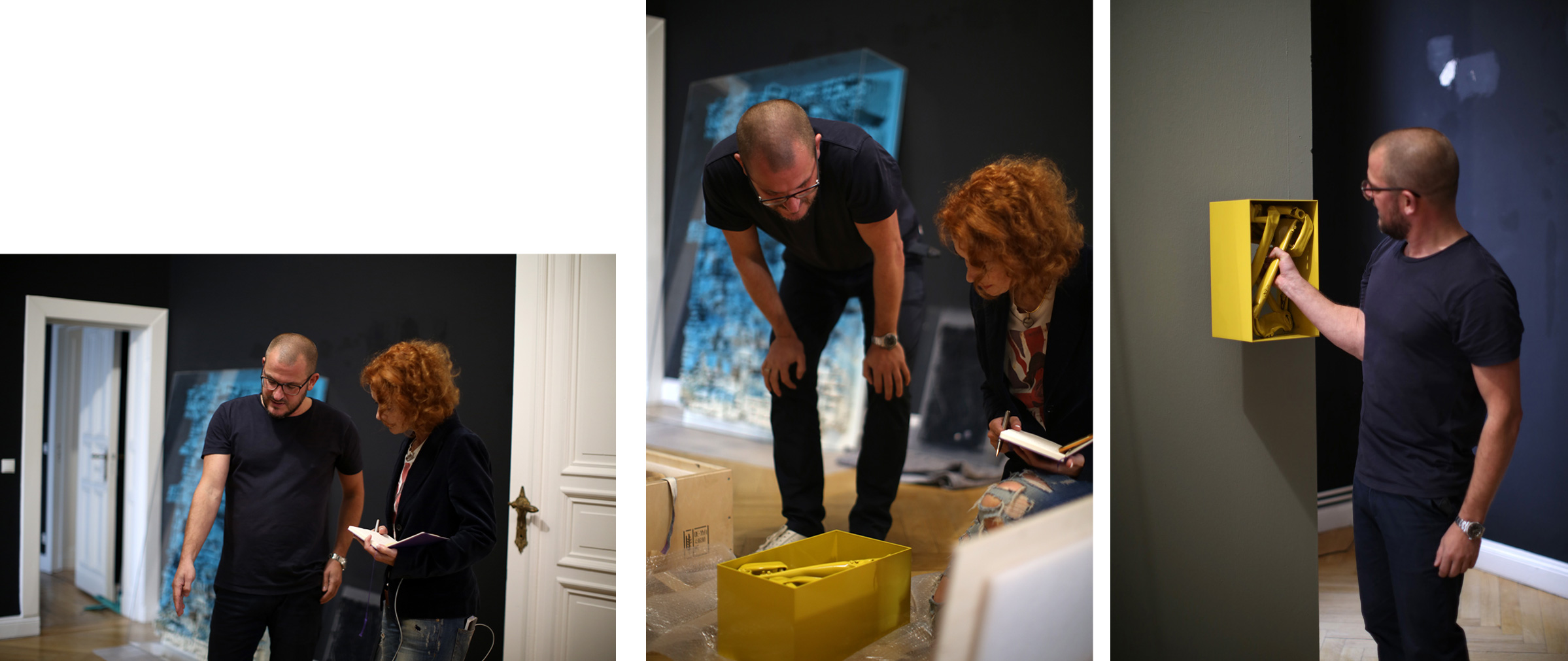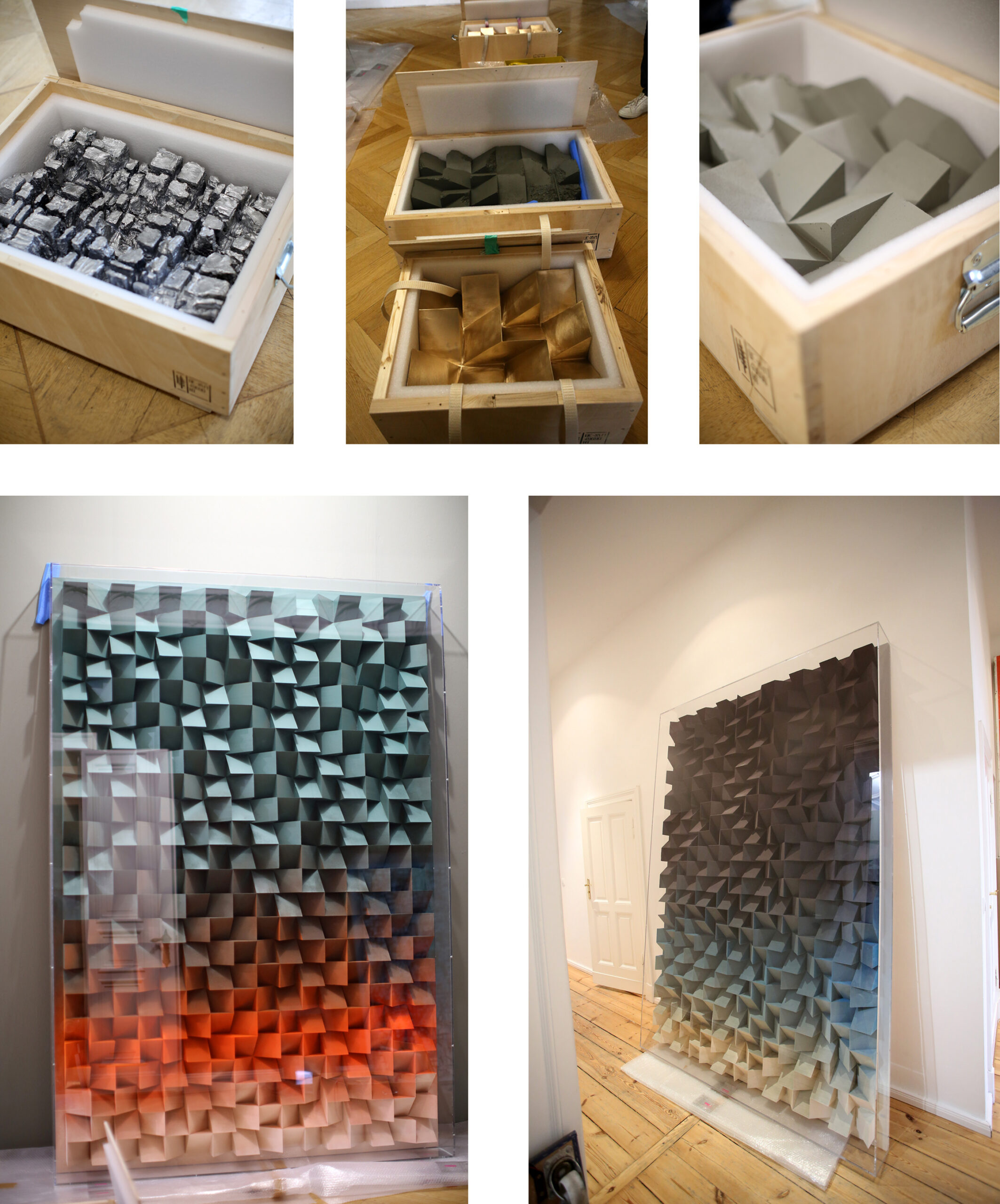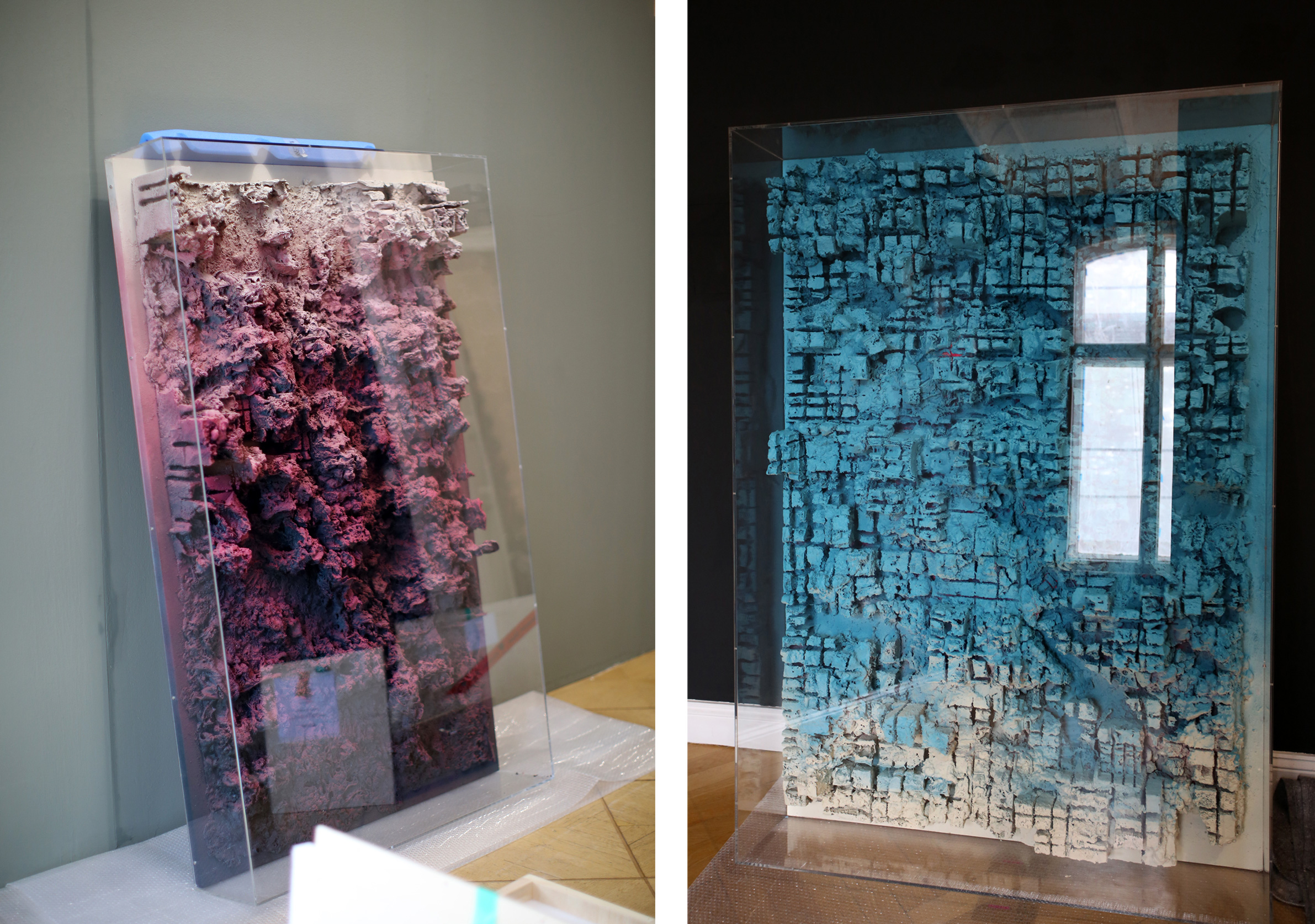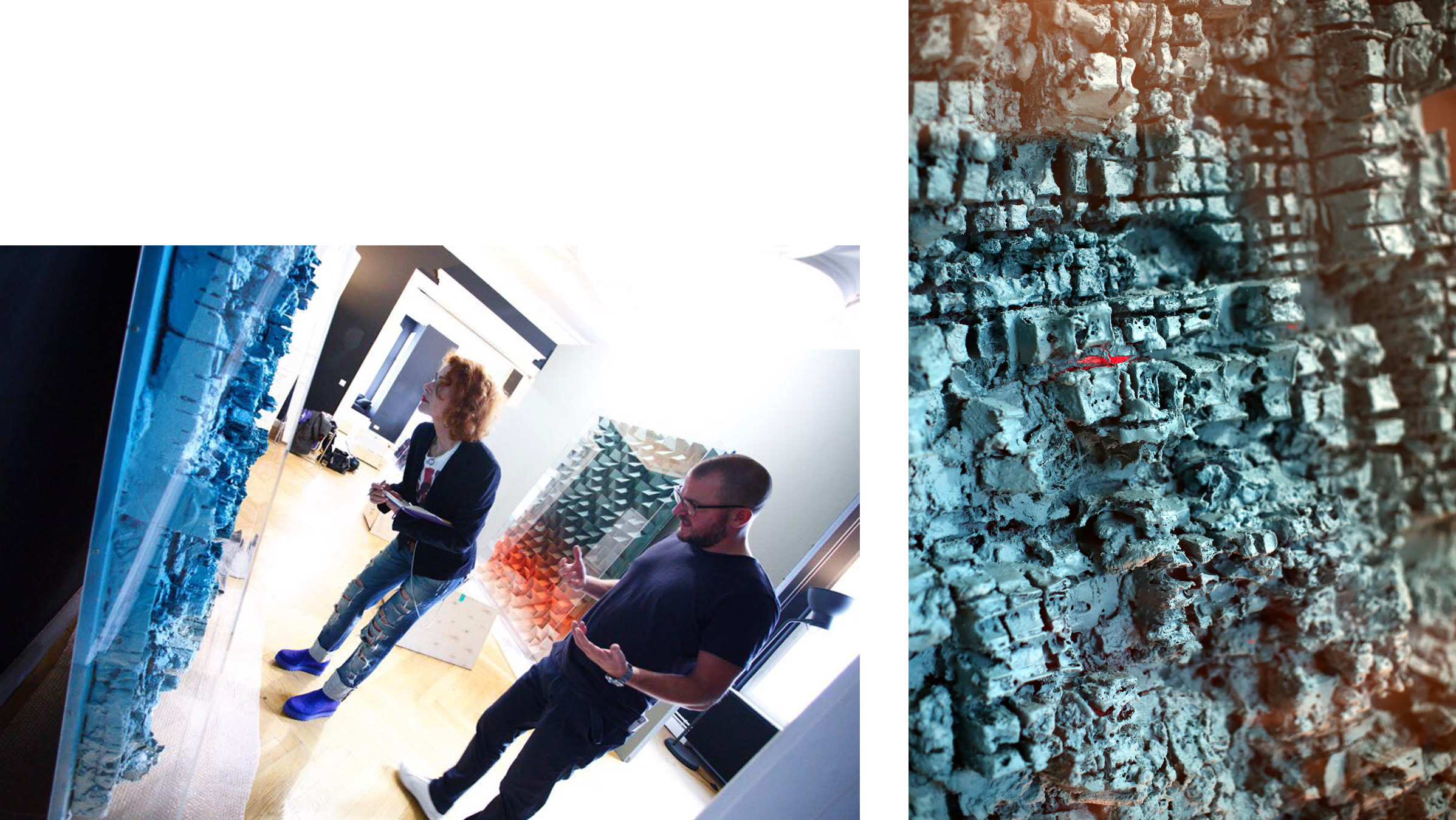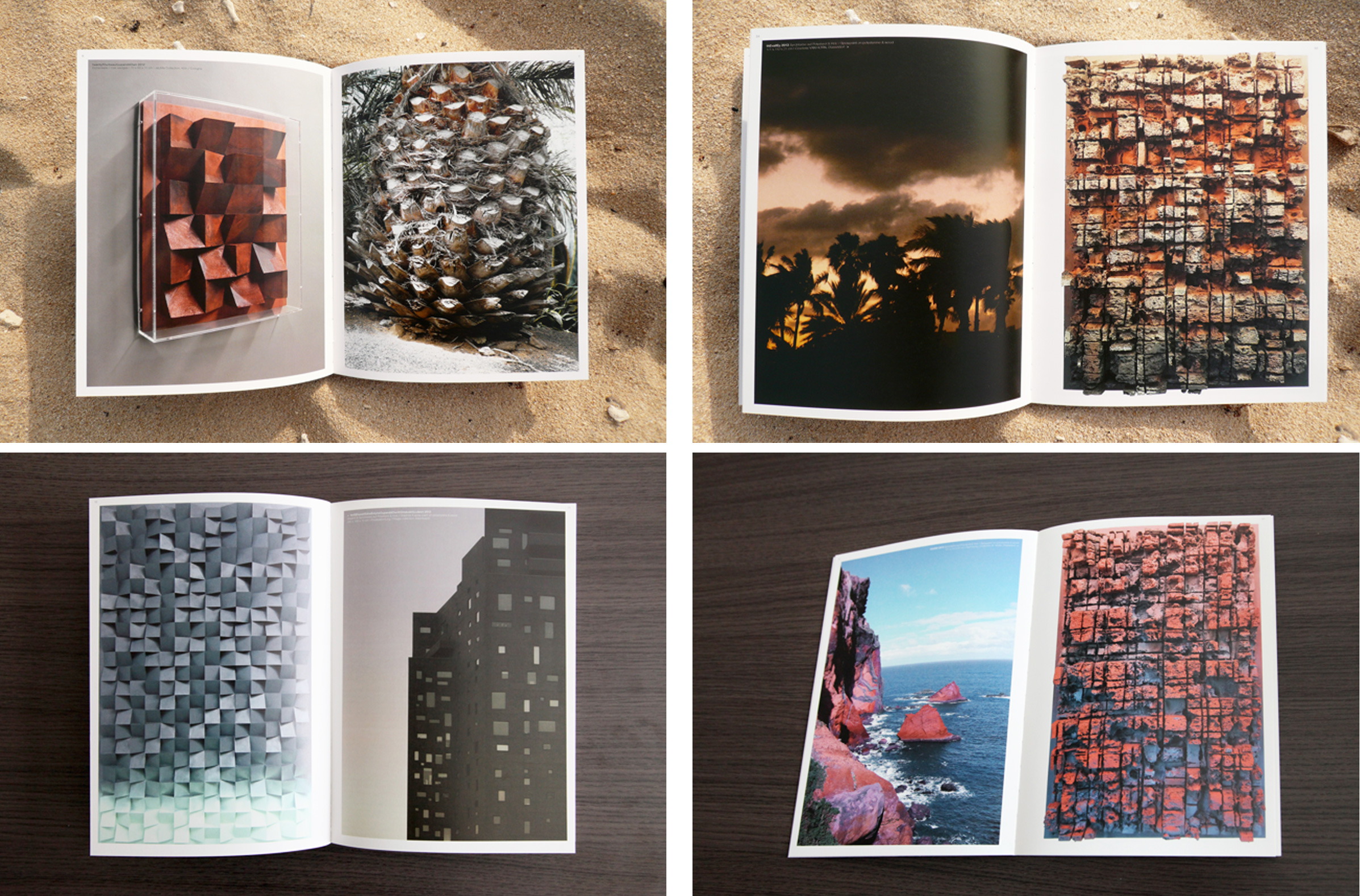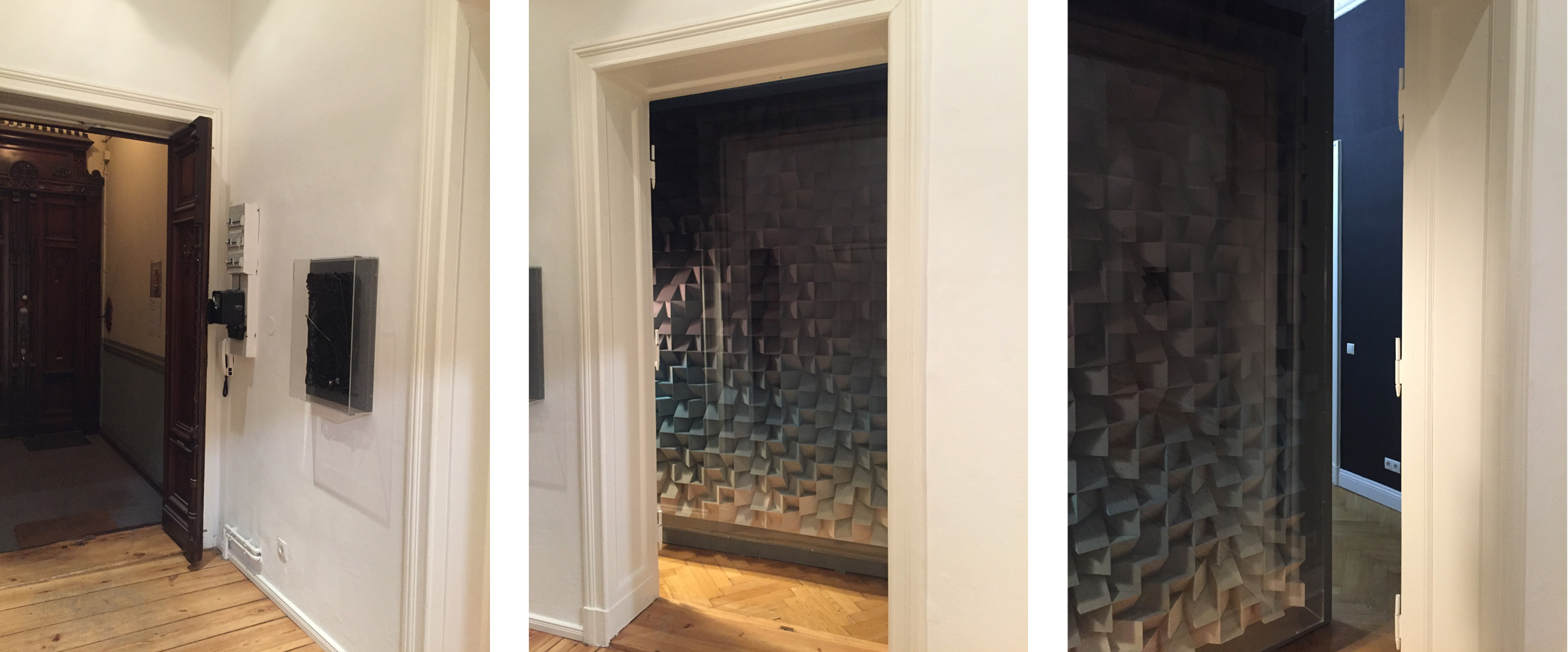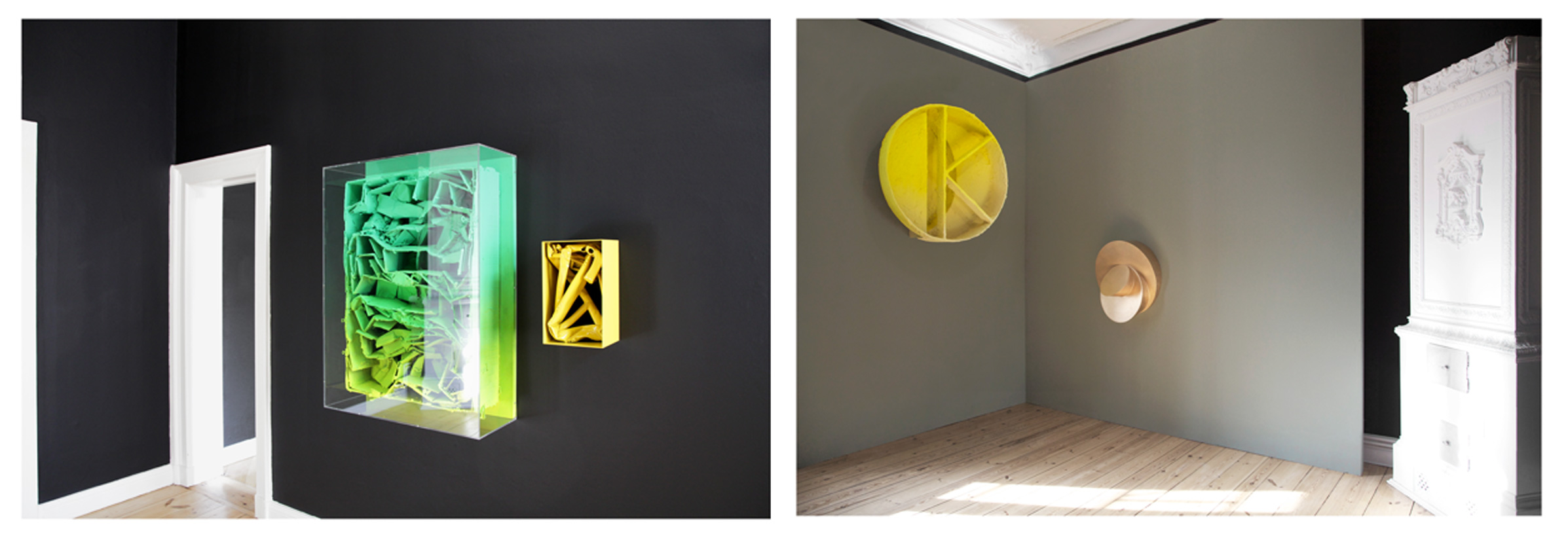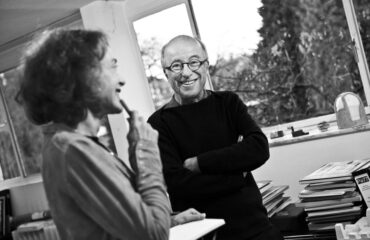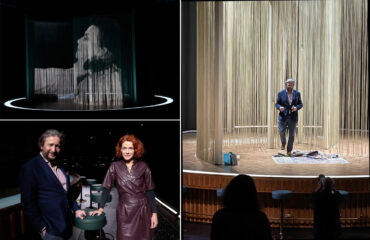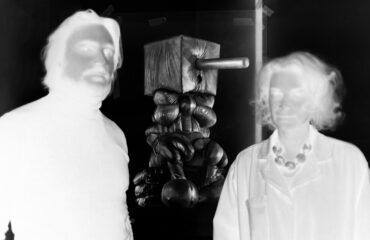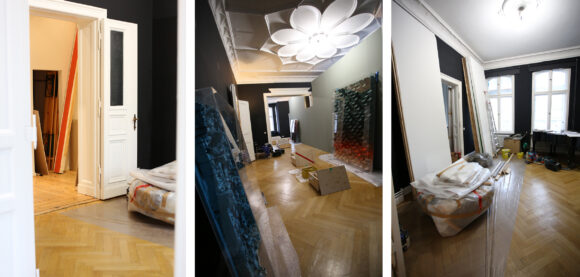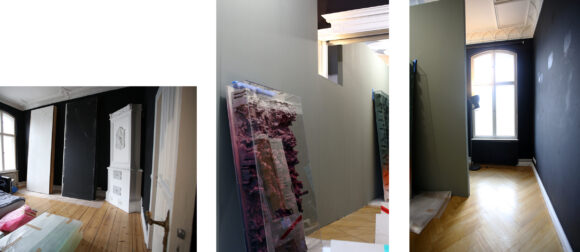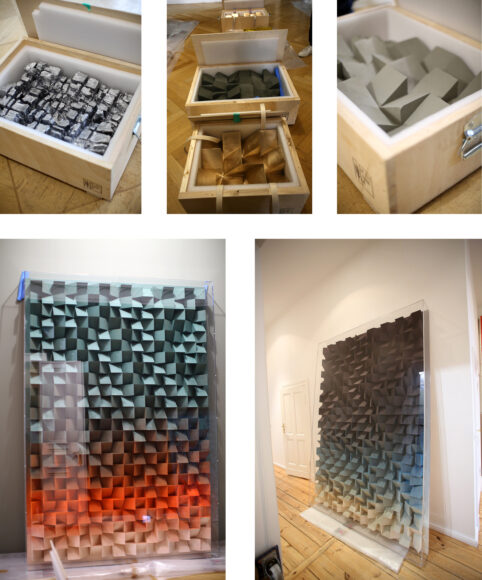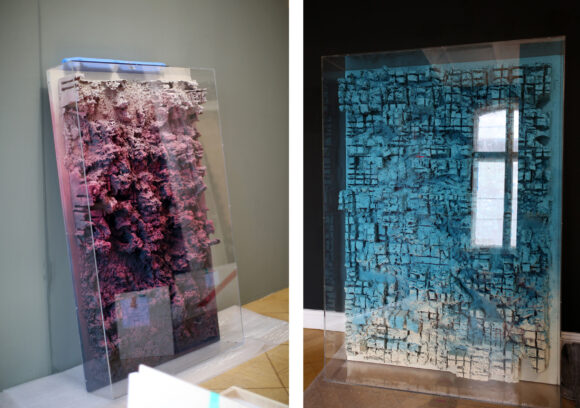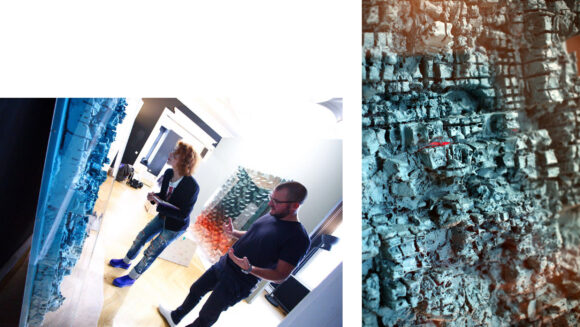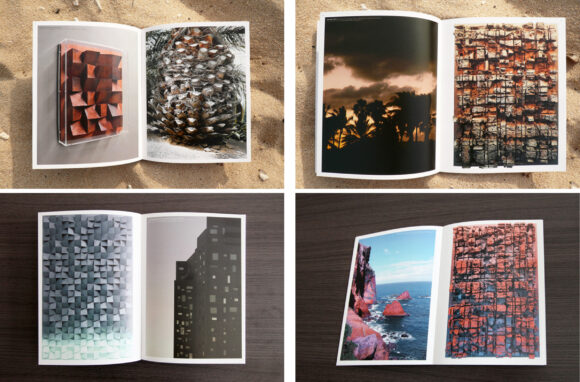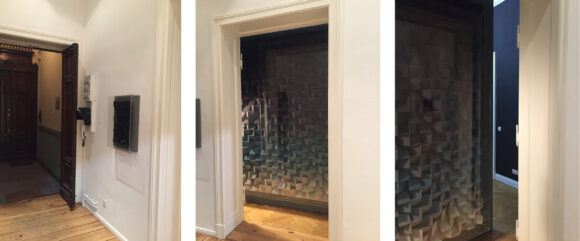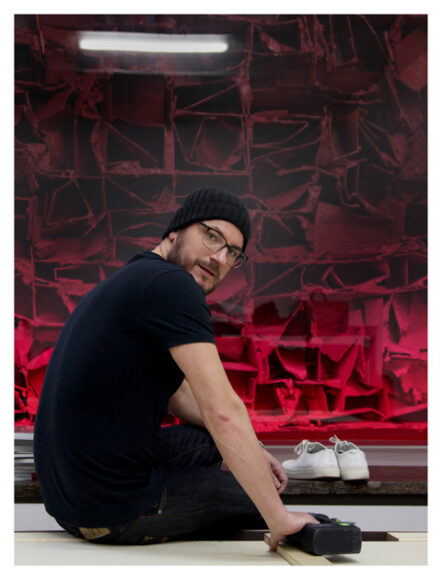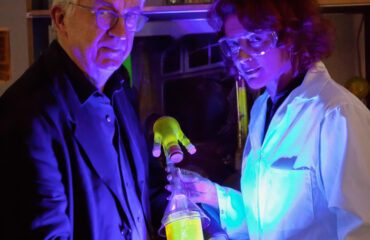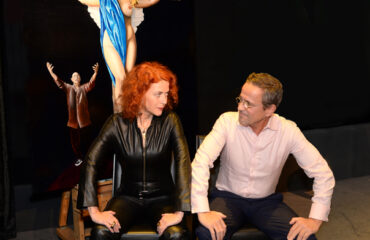Photos: Natascha Romboy, Jan Albers
Berlin-Kreuzberg, 7 October 2017. Rather than meeting Jan Albers in his Düsseldorf’ studio, I met him during the process of installing Making Breaking, his current solo show in Berlin. Although his sculptures have participated in many exhibitions in important museums in the Rhineland, as well as in the United States and Australia, Berlin had never hosted his artwork. This was just one of the reasons why curator and filmmaker Nicola Graef, known for her film Neo Rauch – Gefährten und Begleiter, to invite Albers to the German capital, where she developed a unique exhibition format for the show.
This format incorporates a very special location in an uninhabited bel étage apartment from the turn of the century. To match this bourgeois ambience, the programme has been set up as a quasi-salon, with private and public events.
One of the hallmarks of Albers’ work is engaging the space in site-specific installations. My goal is to find out how the transformation of this space influences the perception of the artwork. Upon arrival, the space is full of frenetic activity, which offers a welcome break. Jan Albers leads me into the grand parlour of this vintage apartment.
I am struck by the unusual black painted walls. The tall doors, painted white, direct my eyes towards the ceiling, where a magnificent decorative stucco highlights the great height of the space. Everything is on the floor: large-format sculptures lean against the walls, smaller works are still packed in their crates, and other packaging material and tools are everywhere you look around …
… first impressions
The parquet floor under my feet creaks as I head off to explore the other rooms. However, something isn’t quite right with the way the rooms are divided. I have obviously walked into one of Albers’ infamous space interventions. The artist plays with the height of the temporary walls to slice up the grand space, creating obstruct passageways and dead ends. Only the grey shades sets them apart from the original walls. So much work! Why?
… space interventions under construction
“I simply want an exhibition to be more than just squared shapes in the space. Each exhibition is an experimental arrangement to set up a relationship of the works. They should visually reach out and grab the viewer. I find it difficult to let someone else design the installation and not influence it. That is so important to me. Setting up an exhibition is part of my artistic process and the message I want to convey. I want my exhibitions to be read as a whole,” Albers explains, while checking the effect of a sculpture on the wall.
… demonstration of three-dimensional effect
I notice that the exhibition design fits into the bourgeois aesthetic of the grand old apartment, but also somehow seeks to disrupt it. It’s time, then, for me to take a look at Albers’ works and include them in my review.
In addition to their unusual shape, the sensational gradient colours give the sculptures a special character. The power of their three-dimensionality is enhanced by the Plexiglas boxes protecting each work, which become part of the composition. Looking throughout the room, two types of structures become apparent: the geometric/angular and the organic/explosive. So I ask Albers about this. “In fact, there are two loose ends in my work. A very tidy part such as the Wedge Pieces and the exact opposite, the apocalyptic Chainsaw Massacres.” I think of wild scenes of blood splattering everywhere. “The Wedge Pieces can be read as my personal response to minimalism and conceptual art. Although the arrangement is freestyle and does not follow any mathematical principle, still, everything seems to follow a plan. A plan based on strategy: the wedge, always the same size, is assembled in different arrangements into a geometric structure biting out the space. However, everything seems tidy, clean, and deliberate.”
… examples of the Wedge Pieces
“The Chainsaw Massacre pieces are the exact opposite. Here I let myself go wild on the material and draw grid-like lines on the block using a chainsaw. Confusion, chaos, wanton destruction and mishap, drive the process forward, before the pieces are repaired and restored. The entire work is a permanent construction site between destruction and repair, chaos and tidying up,” Albers says, explaining, with passionate gestures, the contrasting work process.
… examples of the Chainsaw Massacres
This explains the title of the exhibition Making Breaking. I turn to one of his Wedge Pieces and immerse myself in its geometric structures. I imagine a marble ball quietly trying to find its way out of the labyrinth the artist has created. But when my mind turns to one of the Chainsaw Massacres, it is flooded with images of broken, apocalyptic landscapes littered with ruins. I see war-torn cities, sci-fi scenarios: the end of times.
… detailed analysis
“Are your works based on concrete references or experimenting during the work process?” I ask. “Both. At first I was not aware of that. At some point, when I saw my own photographs, I realised that my works seemed to be closely linked to the real world.” As an example, he shows me one of his exhibition catalogues, where I can see the juxtaposing relationship of the photographs and his sculptural pieces. Incredible! His sculptures suddenly become readable as concrete abstractions of urban living spaces and natural phenomena.
…. real-world references
Obviously, there are no limits to the range of interpretation of his work. But as soon as you connect, you get engaged. So get engaged. That’s the key! This is probably why it is so important to Jan Albers to let the works “reach out and grab” the viewers. To what extent does the interplay of the artworks and the intervention of the space fuel this intention?
A week later. Preview: Making Breaking
The mix of private and public in the quasi-salon space becomes real for the first time during the opening weekend. The Friday preview was for invited guests only and on Saturday, it was the public opening of the exhibition. I enter the apartment full of anticipation. The first reliefs are found right at the entrance. So far, everything looks normal…not quite so! Here too, it’s worthwhile taking a closer look. What looks like a black piece of wild cables is installed next to a black electric box. Meanwhile, attempting to turn left into the room proves difficult. The passage way has been blocked by a large-scale work. You can either look at it calmly and walk straight ahead or painstakingly pass it by. I decide for the later.
… at the entrance
In the parlour, the layout of the space is particularly surprising. Unlike a typical eye-level installation, the height of the works is unpredictable. By combining and isolating certain works, different visual axes and references are created. The juxtaposition of a concrete and a ceramic cast sculptures, both based on Wedge Pieces, shows the enormous influence of the value of the material in the meaning of the piece.
… Composition and Isolation I
Walking around the room, I repeatedly see visitors curiously peeking behind the fake wall. Shortly afterwards, they emerge from the dead niche with a look of slight irritation. That’s actually a bit funny. In the smaller adjoining room, the fireplace reminds me of the room I saw the week before. Poisoned green, bright yellow, and bronze, the sculptures assert their presence and counter the viewer with their organic forms.
… Composition und Isolation II
Bottom line?
The staging of the works is amazing. The works, the visitors, and the architecture interact impressively. Why? It is the change from the usual exhibition space that Jan Albers uses to disrupt our habitual patterns of perception. This disruption heightens our awareness of the space and the three-dimensionality of the sculptures. You don’t look at the works in an isolated way but in relation to the surrounding space. That’s why they jump out at us, slap our faces, make us curious, invite us to engage, and make room to develop individual fantasies…
Love it. A definite must see!
Jan Albers
More Information
… about Making Breaking:
Berlin Kreuzberg, Südstern 6
Sun 5 Nov: from 3 pm, exhibition on view by appointment (nicolagraef@lonamedia.de)
Thur 9 Nov, 7 pm: artist talk with Jan Albers & Brigitte Kölle, Hamburger Kunsthalle, moderated by Nicola Graef
Fri 10 Nov: exhibition on view by appointment (nicolagraef@lonamedia.de)
Sat 11 Nov: last day, exhibition on view by appointment (nicolagraef@lonamedia.de)
… about Jan Albers:
http://van-horn.net
http://www.1301pe.com
https://www.jensengallery.com

